Learning how to make mayonnaise from scratch is quick, easy, and so flavorful! Plus, it takes only 10 minutes from start to finish. You will never have to worry about running out of mayo again.
Homemade mayonnaise has an amazing creamy texture and a fresh, natural flavor.
If you’ve heard rumors that mayo is difficult and finicky to make, you can rest assured that it is actually quite easy, and the taste is just incomparable!
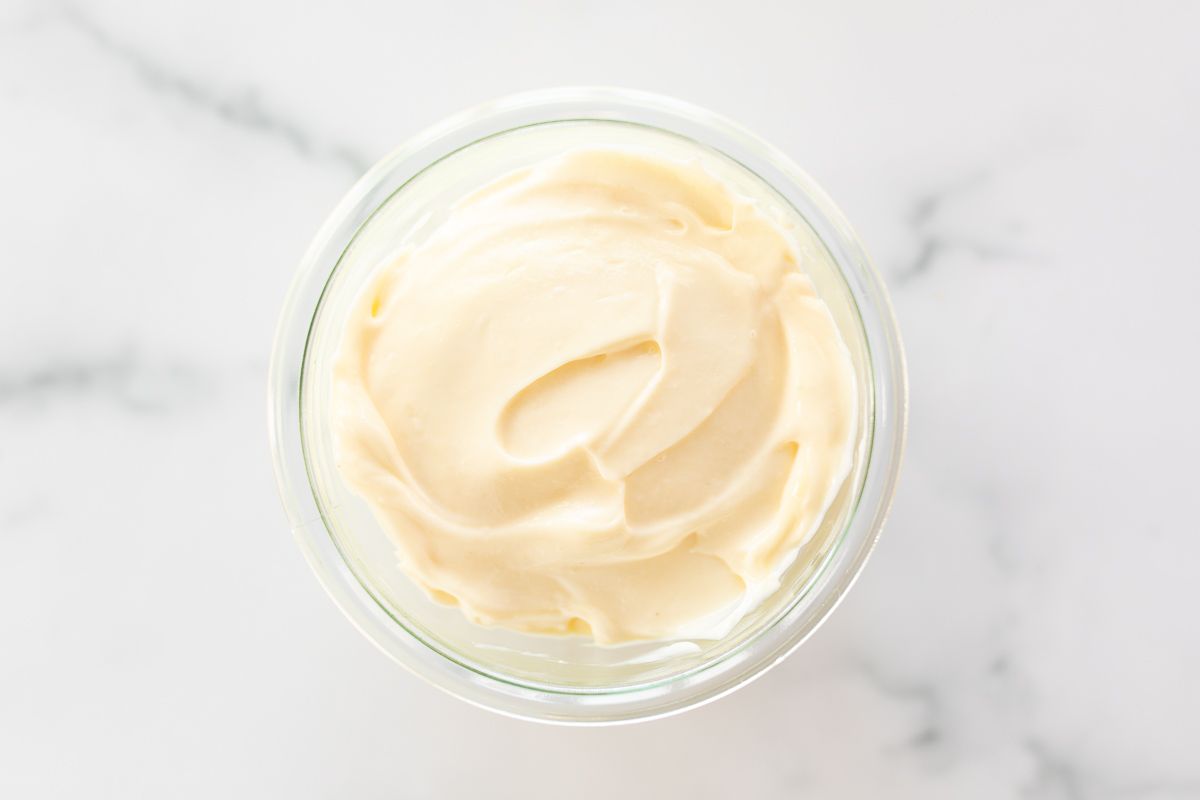
It can be used just as it is, or altered to suit your taste and the occasion. Spread it on sandwiches, mix it in salads, bake it in creamy dips, and turn it into a flavorful aioli.
You’ll find so many ways to use this versatile homemade condiment. It will definitely take your recipes up a notch! Use this homemade mayo to make my family’s favorite dill dip recipe or irresistible veggie dip to make them even creamier.
Making your own mayo should be on everyone’s kitchen bucket list for a couple of reasons. First, the flavor and consistency is so wonderful.
Second, the process of emulsifying liquid ingredients into a semisolid is a fascinating kitchen science experiment you need to do at least once.
Chances are when you taste your first batch of mayo, you’re going to love it so much you’ll wonder why you’ve ever purchased it! Even if you’re not a fan of mayonnaise, this homemade version will wow you.
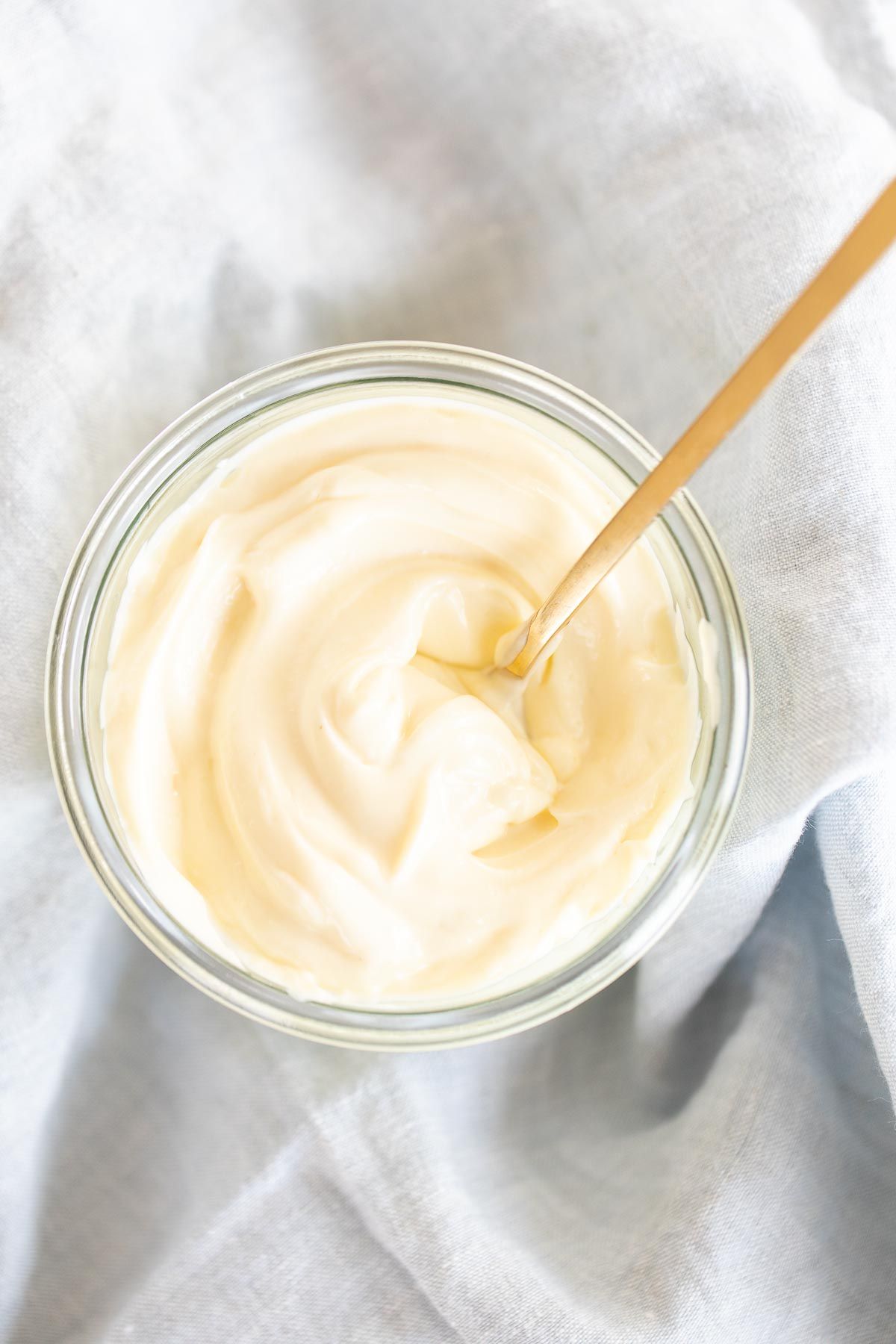
Why You’ll Love Homemade Mayonnaise
- Fresh
- Quick and Easy
- Made from Staple Ingredients
- Make it on a Whim
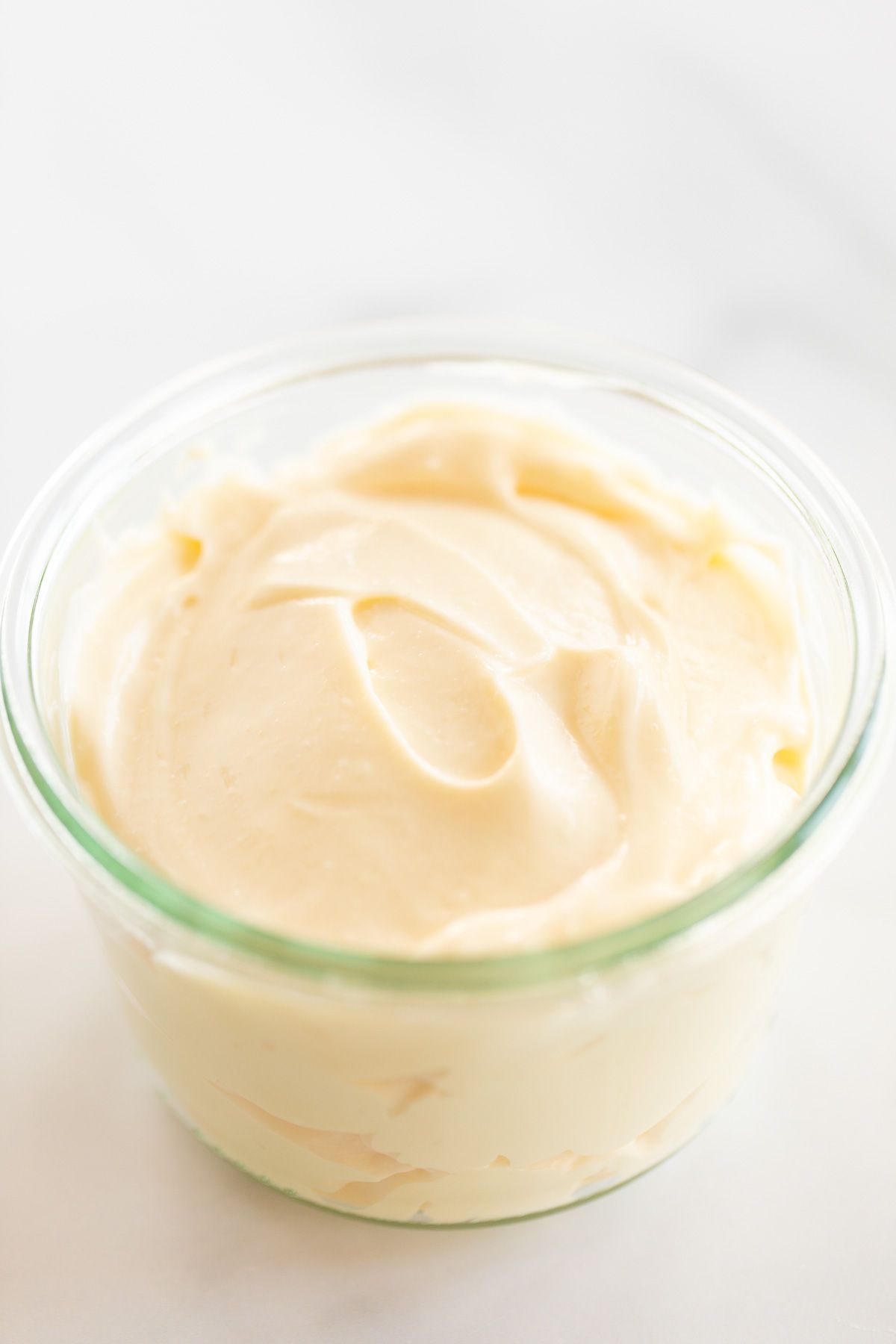
Ingredients and Substitutions
- Eggs – Raw or pasteurized.
- Dijon Mustard – Adds a hint of flavor and helps the mixture emulsify.
- White Wine Vinegar – Vinegar keeps the mixture stable and adds flavor. I prefer white wine vinegar, but the options are endless. You can use the vinegar of your choice to customize the flavor profile.
- Salt – Just a hint for flavor.
- Oil – Use neutral oils like canola, grape seed, avocado or safflower for traditional flavor. Any oil can be used. Olive oil is among my favorites for a touch of additional flavor.
- Lemon Juice – Adds a nice burst of flavor. Use fresh squeezed or 100% real lemon juice.
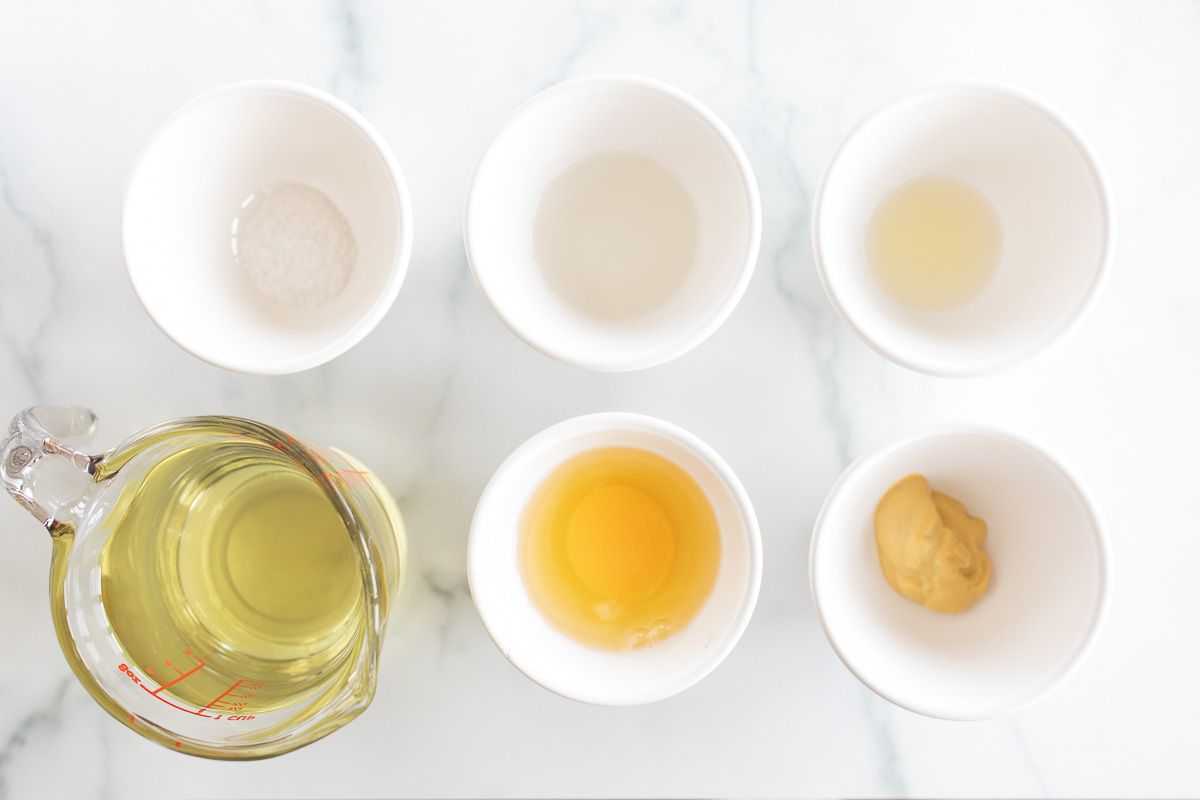
Variations
- You can mix up homemade mayonnaise in so many amazing ways! Add your favorite seasonings and herbs and let it marinate for the best dipping sauce or drizzle.
- Truffle Aioli
- Pesto Aioli
- Garlic Aioli
- Cilantro Aioli
- Sriracha Mayo
- Avocado Mayo
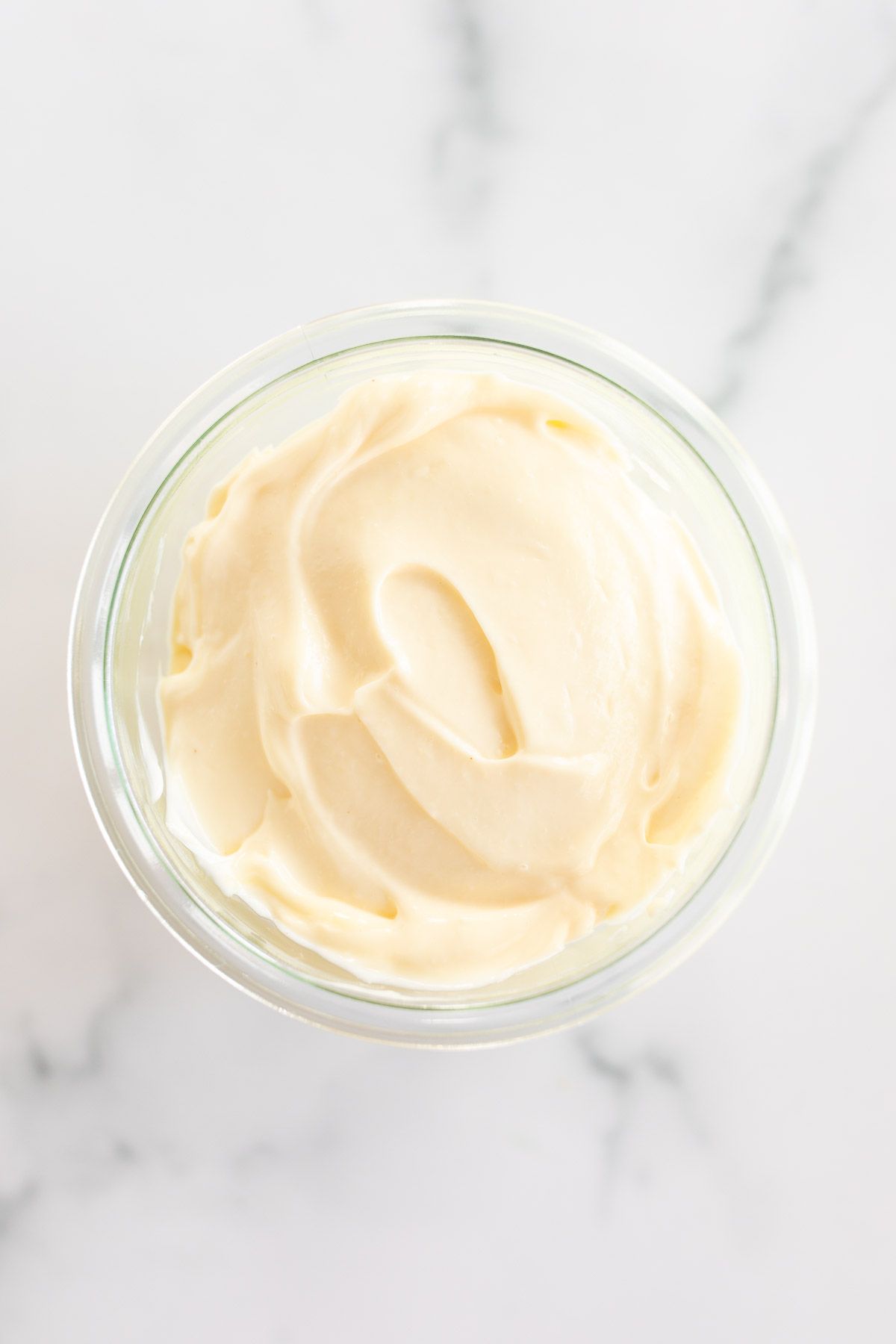
How to Make Mayonnaise
- Mix the egg in a food processor 20 seconds.
- Add Flavors and Stabilizers – Dijon mustard, white wine vinegar and salt. Mix everything together.
- Add Oil – Add a tablespoon of oil, pouring in a steady, slow stream. Process. Repeat this 4 times. It should be thickening at this point. Add more oil, in larger amounts than a tablespoon, making sure to pulse the processor in between each addition.
- Add Lemon Juice – When all the oil has been added and the mayonnaise is fully emulsified, add the lemon juice and pulse until blended.
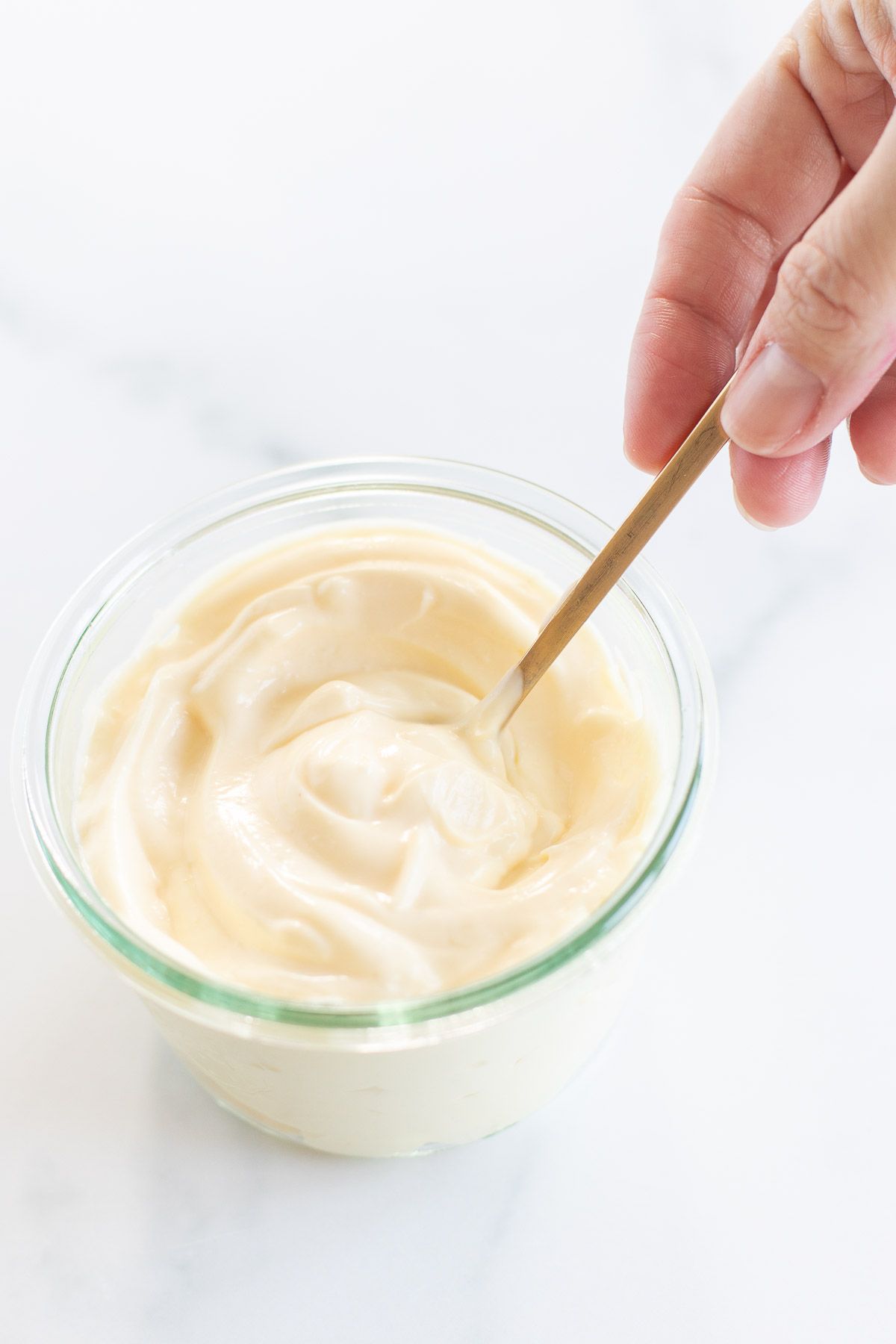

Tips
- Add the oil slowly. Don’t be impatient and try to add it all at once, because it won’t set correctly. Remember, the whole process won’t take more than 10 minutes, so don’t rush this imporatnt step.
- Use room temperature ingredients to help with emulsifying.
- Experiment with different types of oil and see which flavors you like the best.
Make More (or Less!)
Scaling up, down or substituting? You’ll love this printable Measurement Conversion Chart!
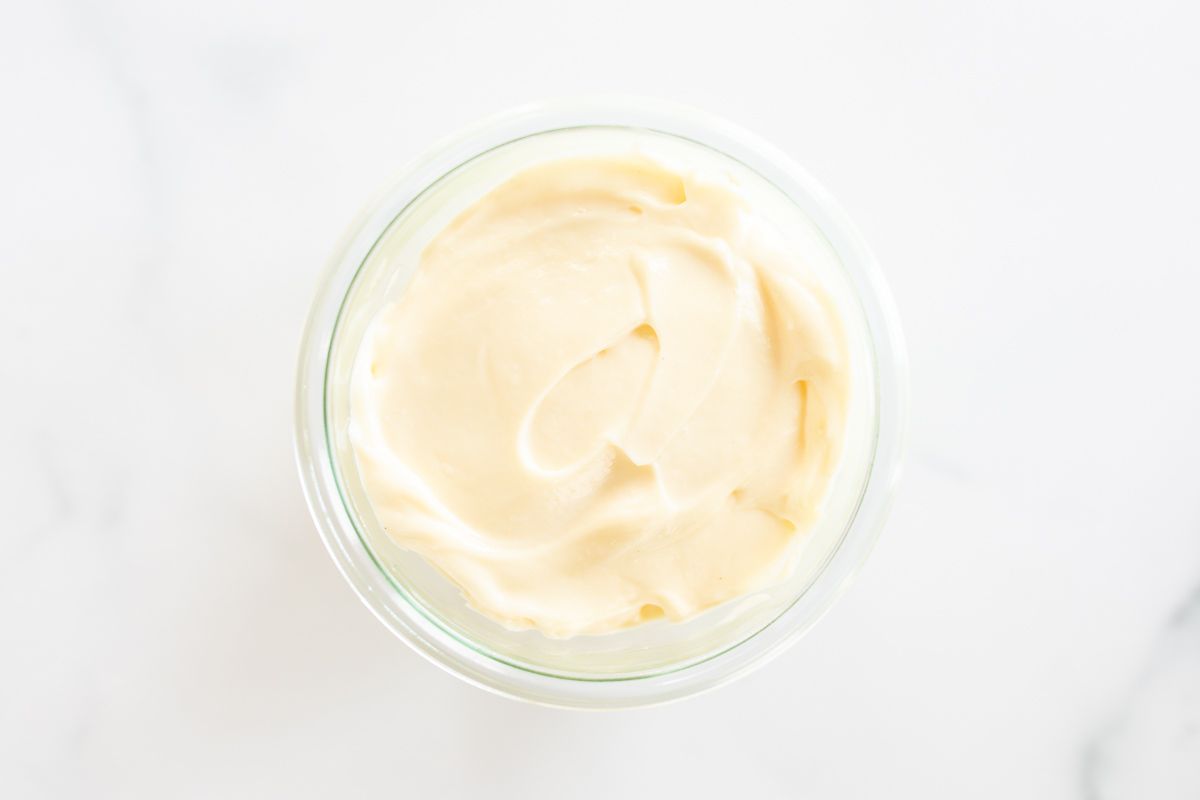
Frequently Asked Questions
Yes, it is safe. The risks associated with raw eggs are low, but if you feel safer using pasteurized eggs, then do that.
Put a warmed egg yolk into your processor. Mix the egg until blended, then slowly add your thin mayonnaise into the yolk, processing while you add it. Your mayonnaise should thicken up.
Homemade mayonnaise uses just a few ingredients, while store bought mayonnaise has a few extra ingredients, including sugar. Store bought mayo is usually thick and fluffy, while homemade mayo is thinner and creamy. Homemade mayonnaise won’t last as long as store bought mayonnaise. They can be used interchangeably in recipes.
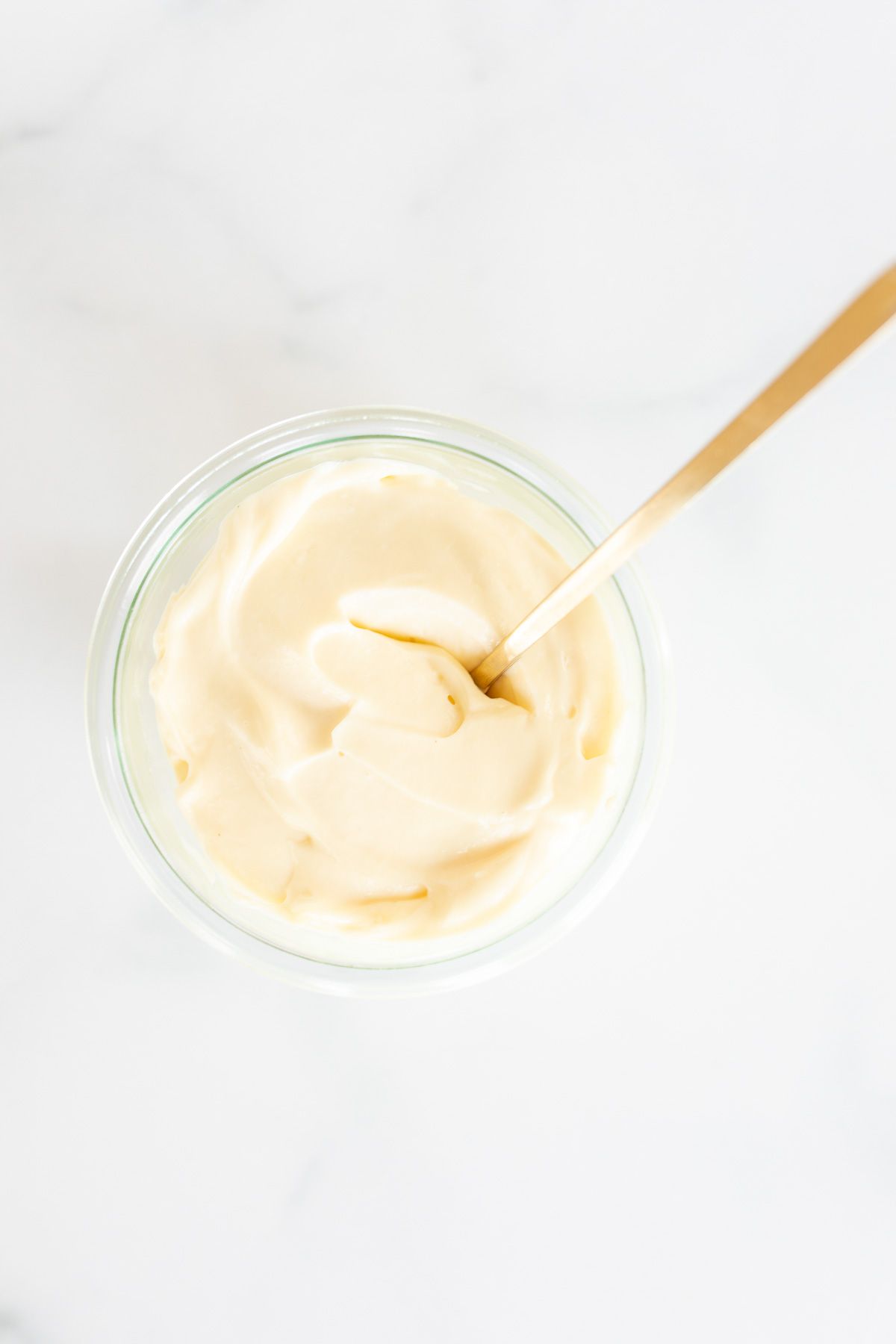
What is broken mayonnaise and how do you fix it?
Broken mayonnaise occurs when the ingredients didn’t emulsify correctly, causing the bonds between the ingredients to break. It leaves a curdled-looking mixture that certainly doesn’t look like mayonnaise. The good news is that it is fixable by using one of these methods:

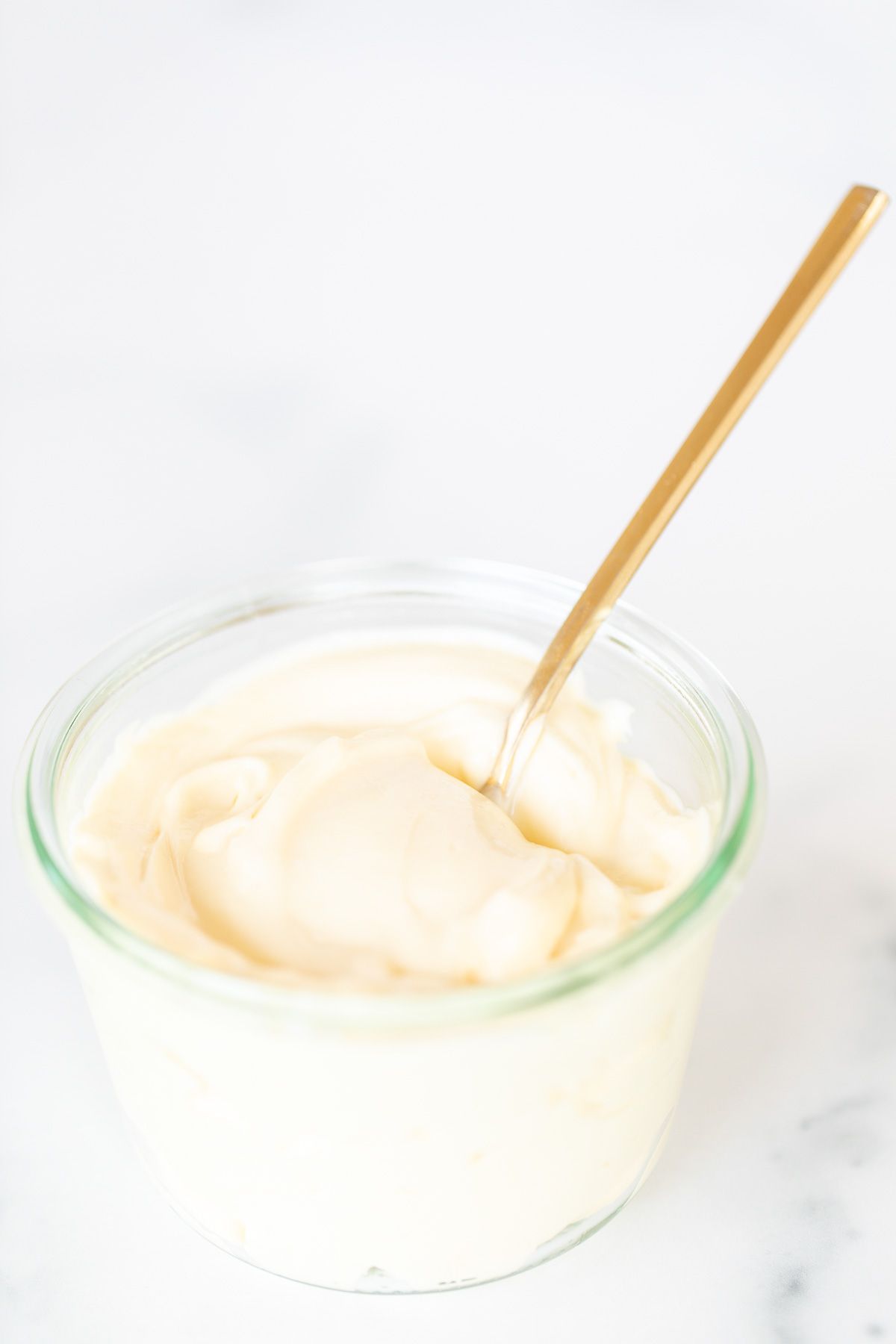
What to Do with Leftovers
- Store your leftover mayonnaise in a sealed, airtight container in the fridge.
- Use it in tuna or egg salad sandwiches.
- Use it in your favorite dip that calls for mayonnaise. See recipe links above.
How to Store
- At Room Temperature – Mayonnaise shouldn’t be left at room temperature for longer than two hours.
- Refrigerate – Homemade mayonnaise will usually stay fresh for up to a week in your refrigerator in a covered container. Or, check the expiration date on your eggs; mayo should last as long as the egg would have been good.
- Freeze – Mayonnaise does not freeze well. The process of freezing and thawing will likely break down the emulsified ingredients. If you plan on using the mayonnaise in your cooking once it has thawed, freezing will be fine. Otherwise it is best to use it quickly and then make a new batch when you need it.
Dietary Considerations
- Gluten Free
- Dairy Free
- Nut Free
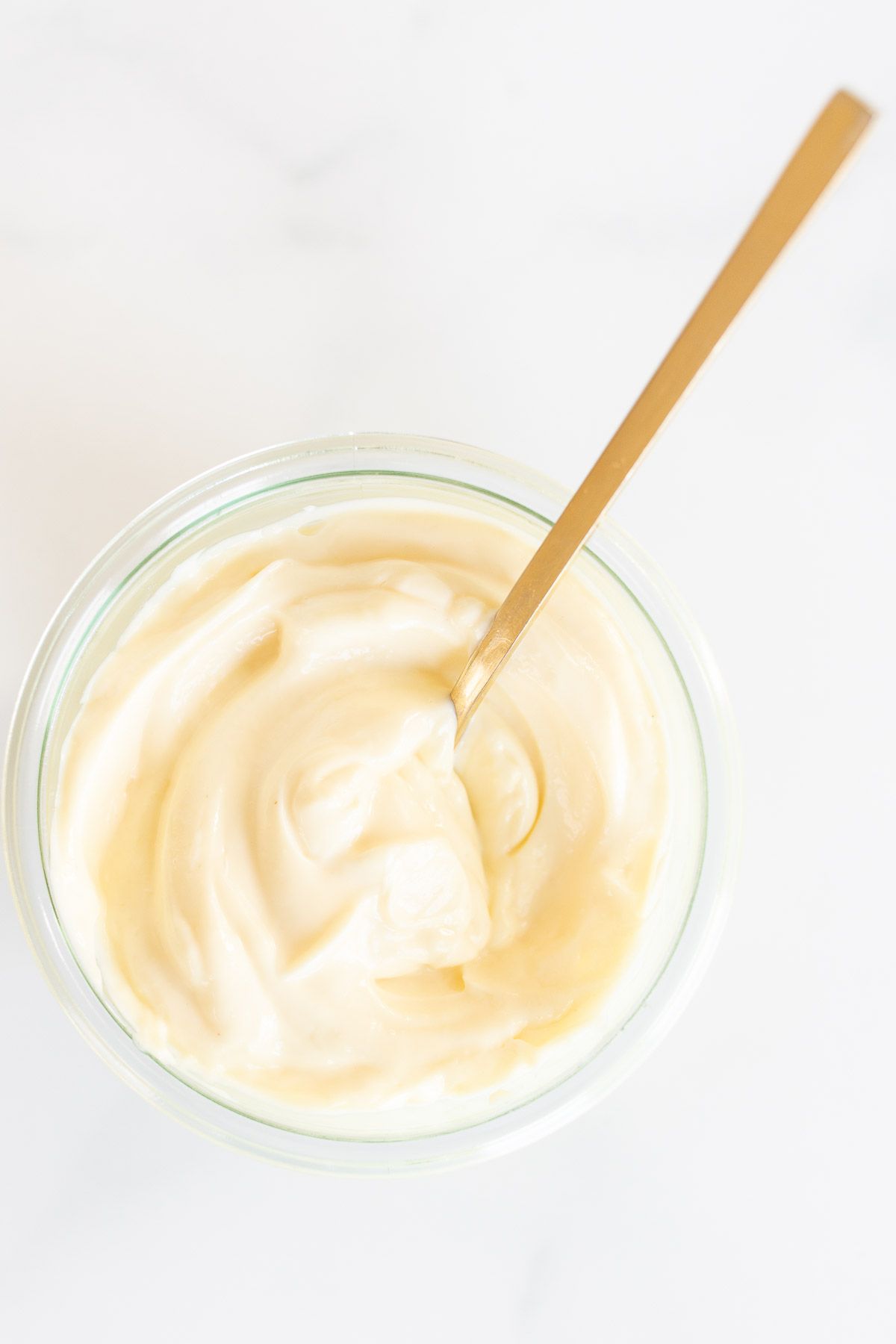
More Dips and Sauces
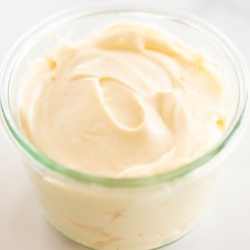
Mayonnaise
Ingredients
- 1 large egg room temperature
- 2 teaspoons Dijon mustard
- 1 tablespoons white wine vinegar
- ½ teaspoon salt
- 1 cup oil canola, grapeseed, safflower or olive oil
- 1 teaspoon lemon juice
Instructions
- In a small food processor, add egg and pulse 20 seconds.
- Add dijon mustard, white wine vinegar, and salt. Pulse 20 seconds.
- Evenly add a stream of oil, a tablespoon at a time, processing for a few seconds in between for a total of 4 tablespoons or ¼ cup. The mixture will begin to thicken.
- Once the mixture has emulsified, you can add a little more oil each time, pulsing in between until oil is consumed and mayonnaise has become thick.
- Scrape the bowl down if needed and add lemon juice. Process 15 seconds.
Julie’s Tips
- If mayonnaise feels to thin, stream a tablespoon of oil in at a time processing until thick.
- Homemade mayonnaise will usually stay fresh for up to a week in your refrigerator in a covered container. Or, check the expiration date on your eggs; mayo should last as long as the egg would have been good.
Video
Estimated nutrition information is provided as a courtesy and is not guaranteed.

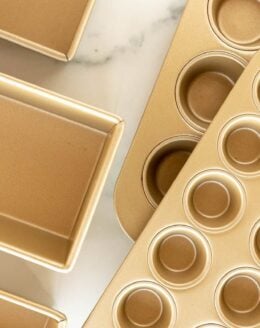
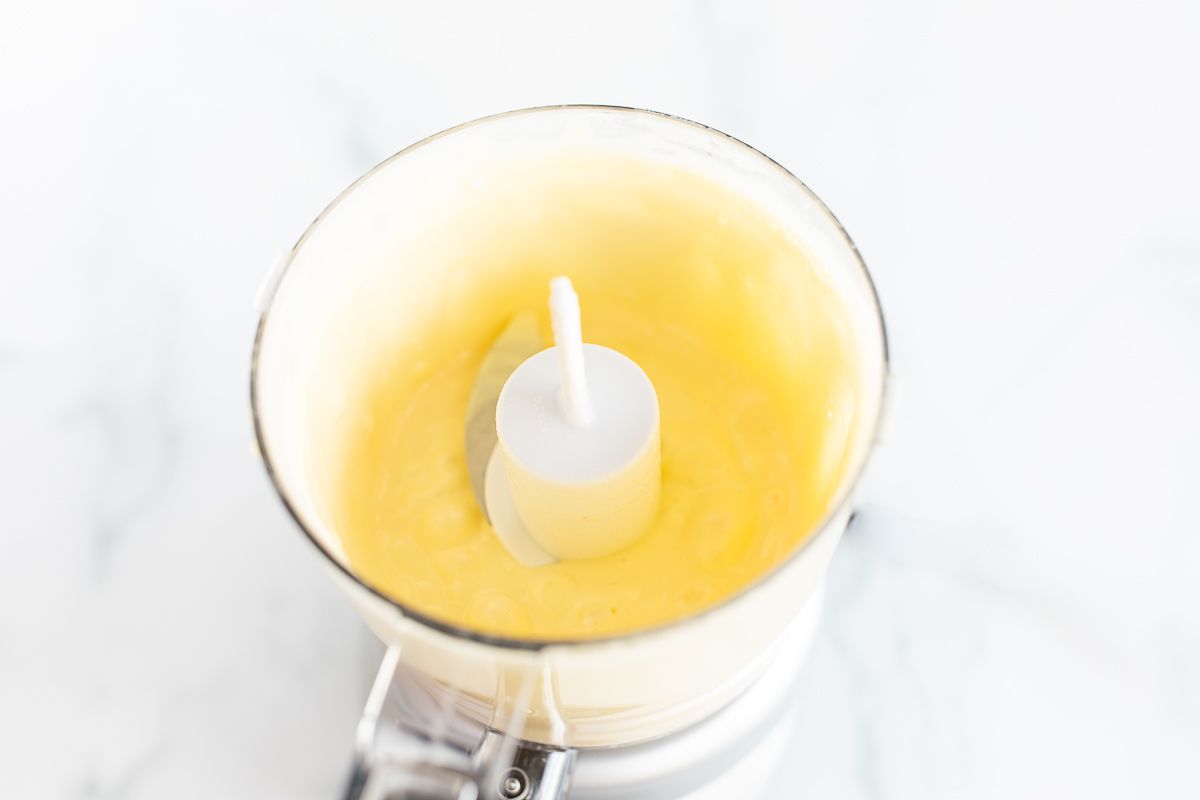
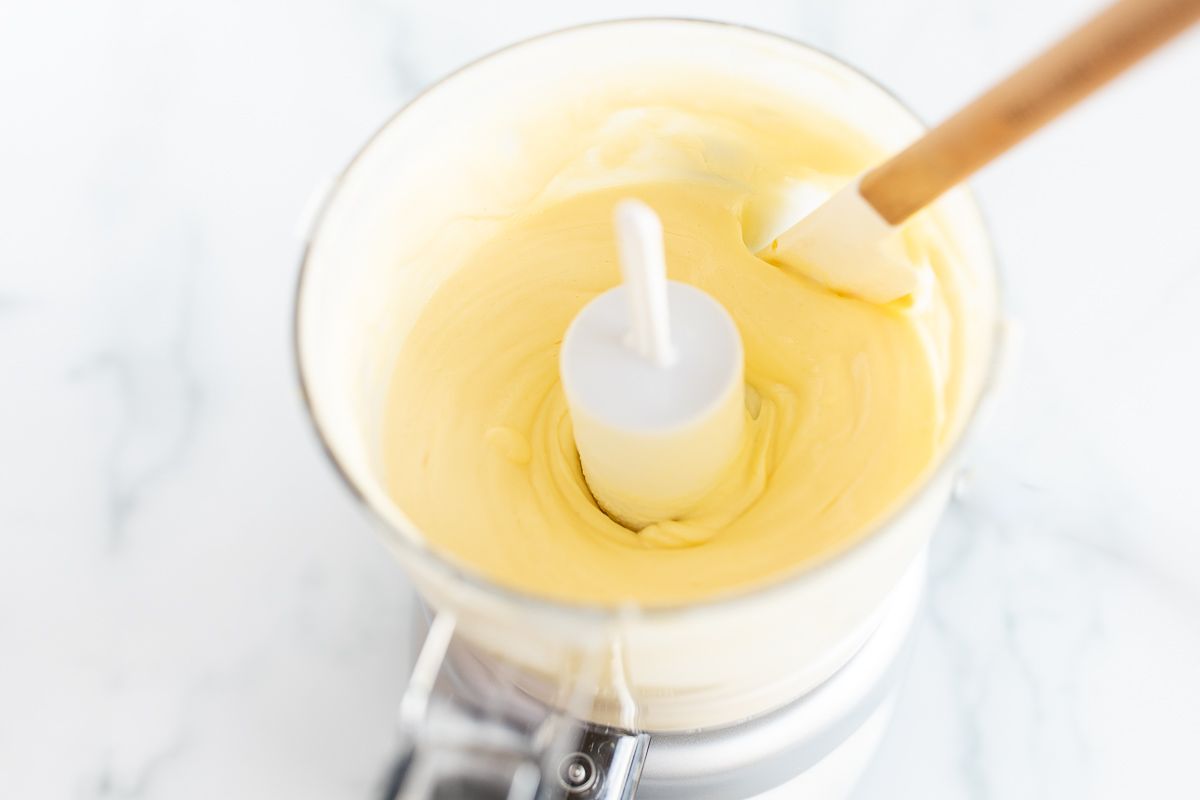
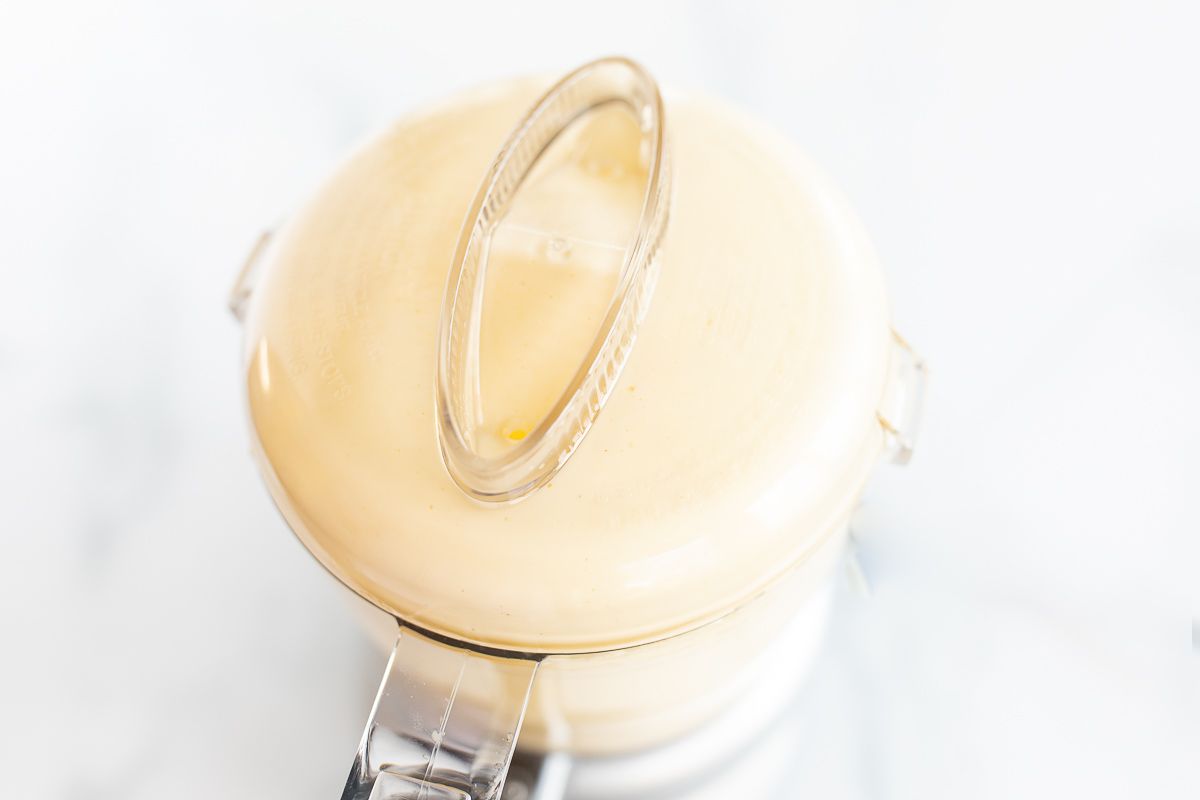

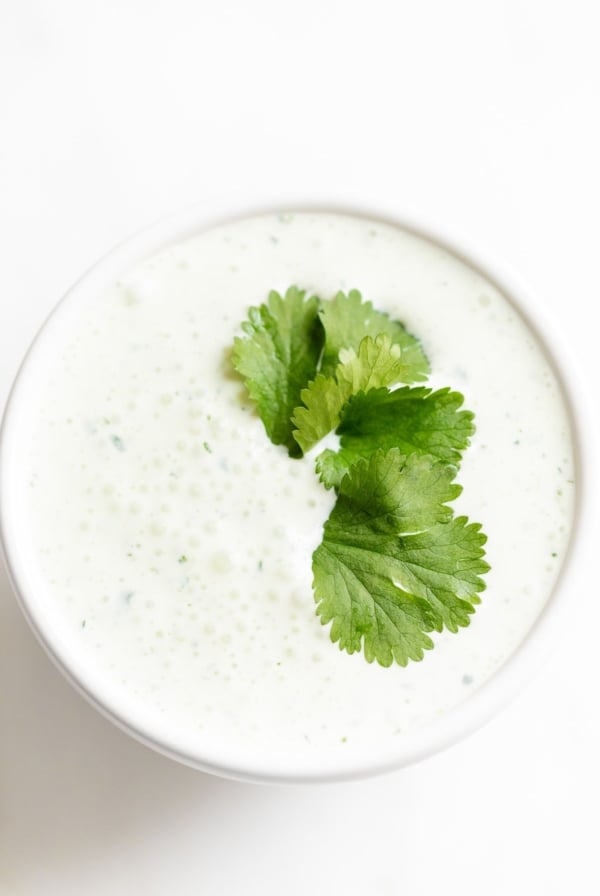
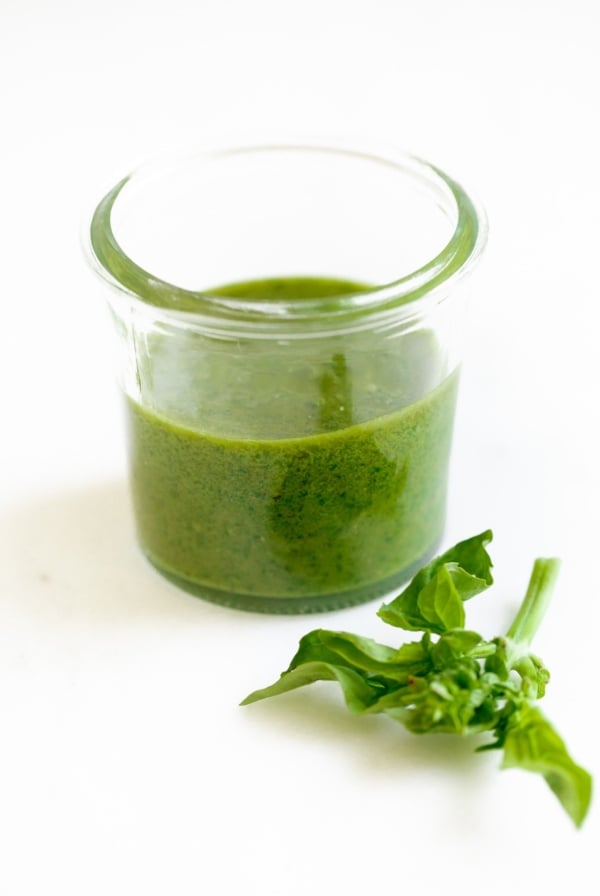
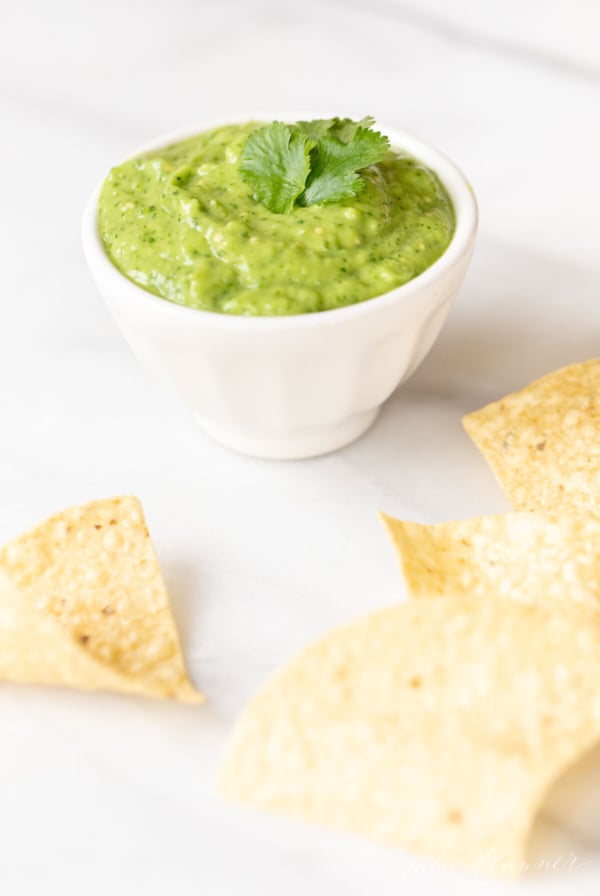
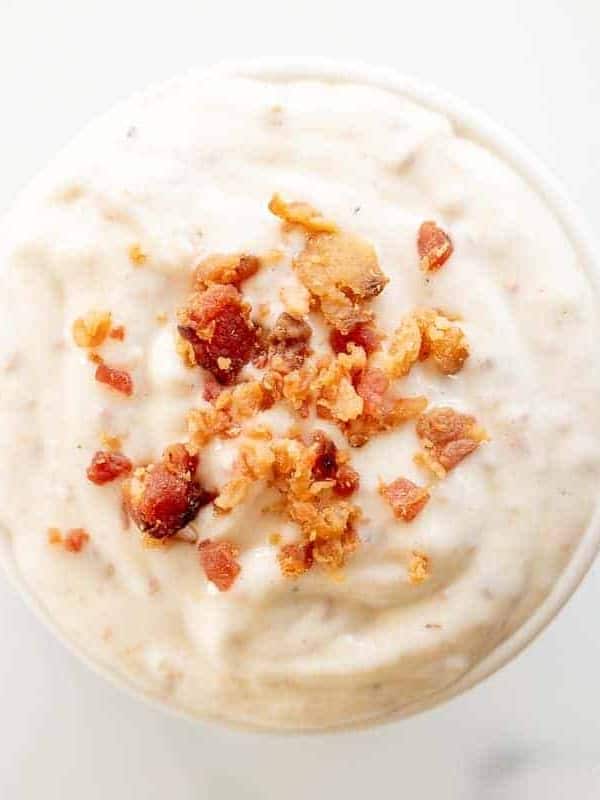
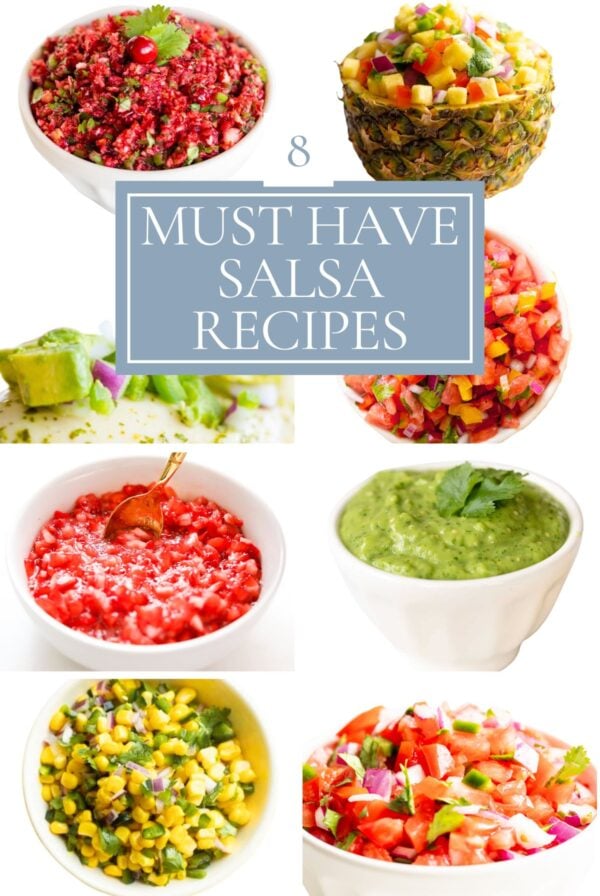
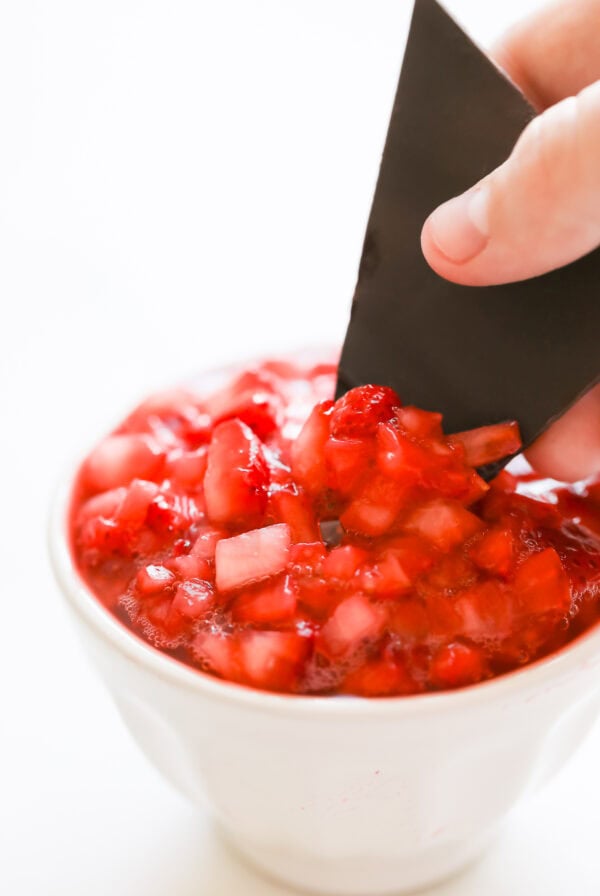
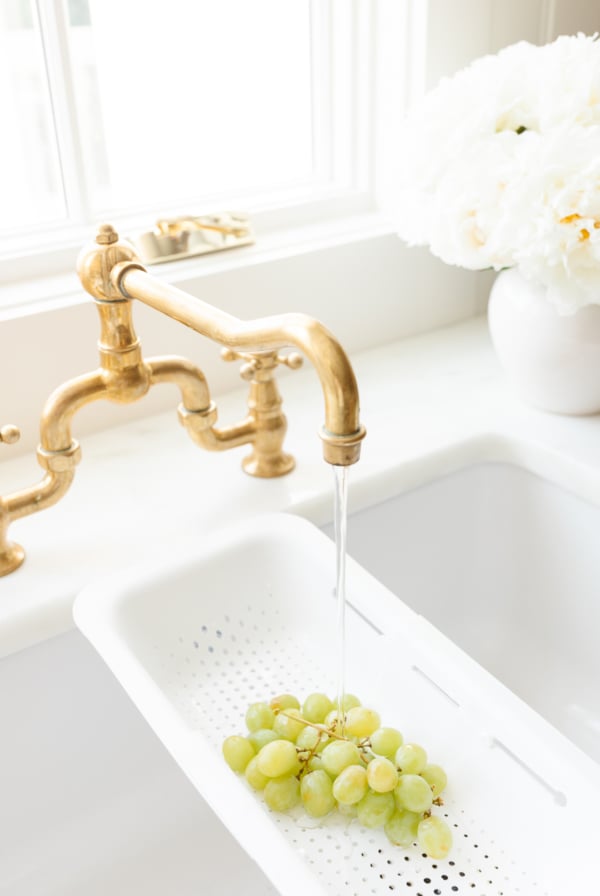






Hi Julie! After reading your post I’m excited to try, but I don’t own a food processor? Can I use a handheld electric mixer? Or would that whip it up too much? Would just a bowl and whisk work ?
You can hand whisk, but electric mixer or blender are easier and faster. Enjoy!
Hi! Success Happy to know I can make mayo. TY. I prefer the flavor & zest of Miracle Whip. Any sugestions ?
Hi Mary,
I’ve never made homemade Miracle Whip, but I do use it for deviled eggs! Try adding a 3-4 teaspoons of white sugar to this recipe and see if that helps capture the flavor for you!
Good luck,
Julie